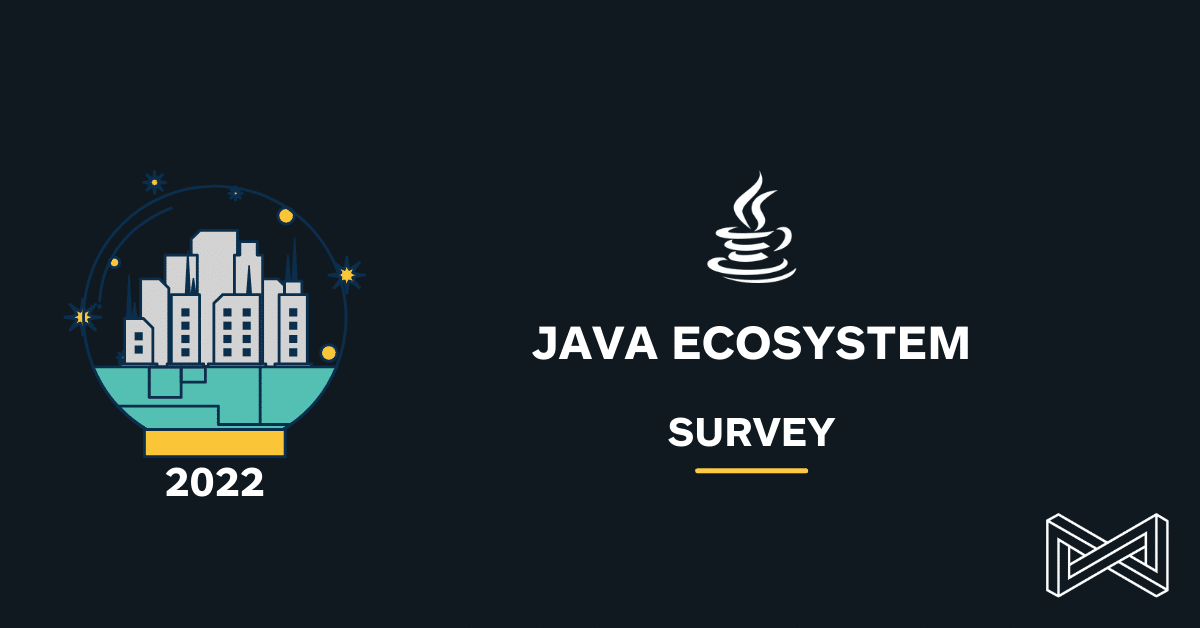Java has been around for about 25 years now. Yet, despite Java being around for a quarter of a century, the technology is still emerging.

For the last couple of years Python has overtaken Java as the most used programming language. Even so, according to Gartner or IEEE, Java is still the second most used language. Considering Fortune 25 companies, Java is in the top 5 languages used, and in 90% of the fortune 500 companies developers write Java code… So, if there is one thing to be sure of: Java is still alive and kicking after 25 years.
Despite Java being around for a quarter of a century, the technology is still emerging
But why is java still so popular?
Let’s get back to the early years. James Gosling created Java at Sun Microsystems and released it in 1995 as an open source development language. In that era, web development just started and there was a lack of development languages which can be used to create software programs which run on client machines irrespective of the operating system platform. Since Java works based on the Java Virtual Machine, it was able to run code in clients’ machines irrespective of the OS and it helped developers to write generic code as part of web development. Later Java introduced several Java EE features which again made life easier for web developers.
Gosling had five primary goals when he created Java:
- It had to be simple, object-oriented, and familiar.
- It had to be robust and secure.
- It had to be architecture-neutral and portable.
- It had to execute with high performance.
- It had to be interpreted, threaded, and dynamic.
Certainly, these five primary goals were the foundation of the success story of Java.
Over the years a lot of supporting frameworks have been developed in the Java ecosystem which have helped developers to create robuste, portable applications even better and faster than before.
A lot of today’s technologies are based on java development:
- Although there are other ways to make Android apps, most of the applications are written in Java using Google’s Android API. Although Android uses different JVM and packaging methods, the code is still predominantly Java.
- Many government, healthcare, insurance, education, and defense departments have their web applications built in Java. A significant example of this is Google’s Gmail. But also Uber, Spotify, Amazon, Instagram, Netflix… are all built on top of Java technology.
- A lot of scientific projects, certainly in the domains of Artificial Intelligence and Machine Learning, are crafted in Java.
So what to expect in 2022?
- A large number of companies invested in Java development in the past decades, most with success stories both at the client side and at the server side. With the cloud evolution going on, these companies will continue their investments in Java technology. This is clear from the fact that all large cloud providers, such as Amazon (AWS), Google (GCP) and even Microsoft (Azure) have implemented Java Software Development Kits (SDK’s) to enable companies provisioning and managing the life-cycles of their cloud based applications. There are also a lot of other Java Frameworks, such as Spring, Vaadin… that make the life of the cloud native software developer a lot easier. Cloud migration and serverless computing will be on top of task lists of Java development companies.
- More and more consumers prefer to use the internet, using their mobile phones. In China it is expected that 99% of all internet usage will be from mobile phones. Android phones dominate the Chinese market by 80%. Given that Android apps are mostly built based on Java technology, the Chinese demand alone for applications that run on Android ensures an ongoing demand for Java developers in the years to come.
- Data is the new gold, they say. And data processing is the new combustion engine. Java technologies and tools like Apache Hadoop, Apache Mahout, and Deeplearning4j suggest that Java is a prime contender for any big data project that might arise.
So, no bad news to tell?
Probably the biggest problem for the java ecosystem and the speed of further adoption is the lack of software craftsmen. Experienced software developers with an attention to quality, architecture and common sense are hard to find. As Gartner says: insufficient skills will slow down the cloud migration process.
Some say that in this field other programming languages will gain terrain, such as Kotlin, Python, GoLang… However: although these programming languages have their strengths, they are more a kind of added value to Java for specific needs or specific parts of an application.
Java will have a battle to win when it comes to Serverless Computing.
Java will still be relevant and number 1 for enterprise backend systems because of the investments these companies have made in the last decades and because of the mature and very good frameworks, libraries and training available. Java will have a battle to win when it comes to Serverless Computing. Containterisation technologies such as Docker and Kubernetes make the “Write once, run anywhere” approach of Java less relevant. In the domains of AI and machine learning, Java is relevant in addition to other languages, but other languages such as Python or R have a big lead.
And what about Software Craftsmanship at Continuum?
For Java Software Crafters it is important to stay up to date with the latest technologies, frameworks and development techniques. At Continuum, our Tribe holds 75 Software Crafters and focuses on 3 crafts: Java, Front-end and Data. Most of our crafters are Java code ninja’s (about 85%), experienced in ecosystems with Spring, AWS, Docker, Kubernetes, Hibernate, JavaEE and other frameworks in the Java ecosystem.
We also have Software Craft Leads following the market to make sure our Crafters are ready for the things to come. Based on the technology radar of ThoughtWorks, we evaluate old and new technologies and decide which technology needs the attention of our Tribe. We organize knowledge sessions, training, brown bag sessions and so on. By the implementation of our Software Craftsmanship model, we force ourselves to support the community actively by means of Meetups and Conferences. Due to our long term partnerships with our customers, we are able to make profound choices in customer architecture and technology strategies and we have the ability to take responsibility in these.
In short, we’re doing our part in shaping a bright future for Java and its ecosystem.




